• Stainless Steel
Hard Anodized Vs. Stainless Steel Cookware – Which Should You Buy?

Reviewed by Trinity Anderson
Last Updated February 2024
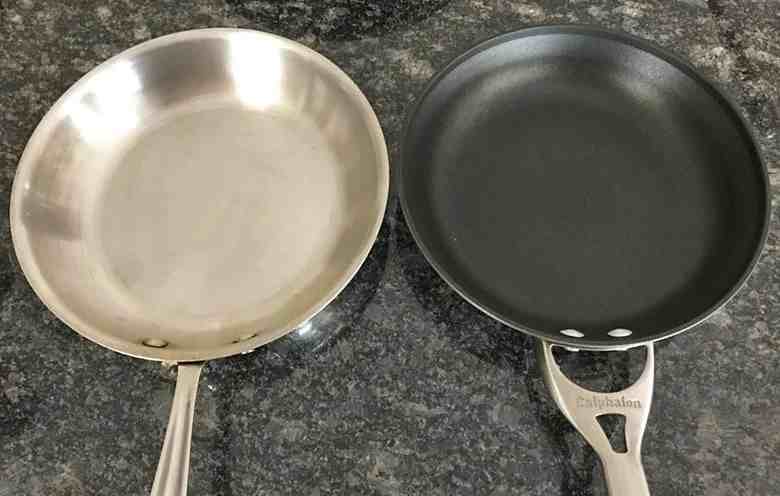
If you are in the market for new kitchen cookware, you have likely narrowed down your choices to hard anodized aluminum or stainless steel. These two materials are known for their durability, but they have distinct differences in performance.
Most modern hard anodized cookware comes with a nonstick coating, which makes it convenient to cook with. On the other hand, stainless steel has gained popularity due to its durability and the fact that it does not have a synthetic nonstick coating.
In this article, I will discuss the variations between these two types of cookware and provide my recommendation.
What is Hard Anodized Cookware?
Regular aluminum is known for its softness and susceptibility to corrosion, despite its excellent heat conductivity. To overcome these limitations, manufacturers employ an electrochemical technique to form a layer of aluminum oxide coating on the surface of aluminum, thereby creating hard-anodized cookware. This involves immersing the metal in a sulfuric acid bath and subjecting it to a low-voltage current. Through this anodizing process, the aluminum's surface is transformed into a hard and resistant barrier against corrosion.
Furthermore, the anodizing process also impacts the appearance of the cookware. In its natural state, hard-anodized aluminum cookware possesses a dark gray exterior, although various brands may choose to paint it.
Calphalon Classic Hard-Anodized Nonstick Cookware

- Water-based AquaShield nonstick technology
- Dishwasher-safe
- Oven-safe up to 450°F
- Long stainless steel handles
- Tempered glass lid
- All cooktops compatible
Since the anodized coating is integrated into the underlying metal, it’s highly resistant to scratches, chips, and peeling. Although this layer makes aluminum virtually non-stick by itself, virtually all hard anodized aluminum cookware has a nonstick coating, which can either be made of “ceramic” or a polymer called PTFE.
So, while the aluminum oxide isn’t going to come off your hard-anodized cookware, the nonstick coating on top of it will likely peel, scratch, or chip within 2-5 years. Hard anodized cookware is less durable than stainless steel because of its nonstick coating, not because of the base material itself.
What is Stainless Steel Cookware?
Stainless steel, a combination of iron and various metals such as chromium, manganese, molybdenum, and nickel, possesses excellent resistance against corrosion and rust. However, its heat transfer capability is compromised due to the presence of these metals. To overcome this drawback, manufacturers incorporate highly conductive metals like aluminum or copper into stainless steel cookware.
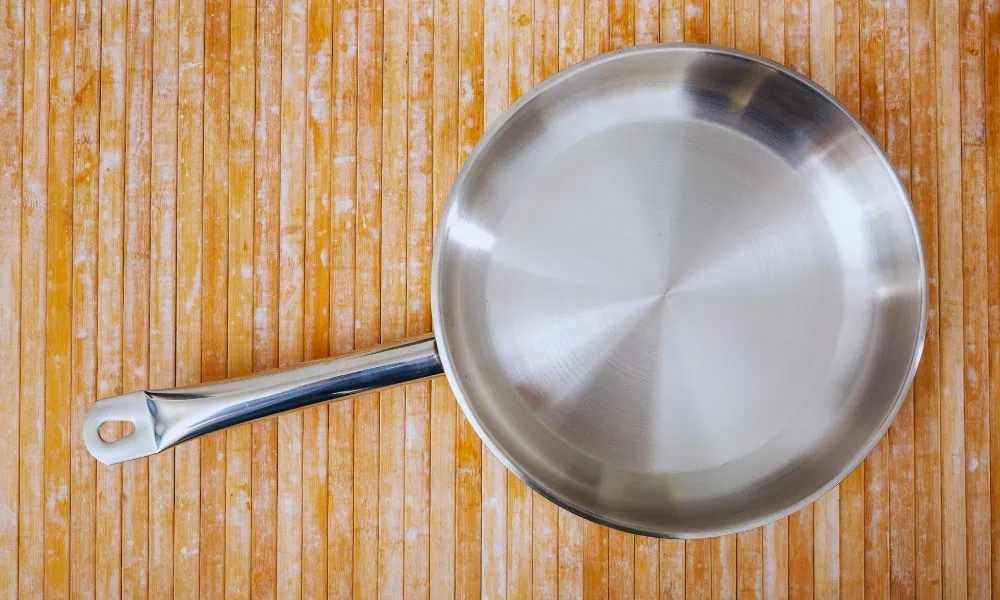
These metals can either be bonded in a thick layer to the base of the cookware or integrated throughout the entire body of the pan through cladding. Cladding involves placing copper or aluminum sheets between two layers of stainless steel, enhancing the cookware's heat conductivity.
12 Differences between Hard Anodized Aluminum and Stainless Steel Pans
Stainless steel and hard anodized aluminum are excellent options for cookware, each serving distinct purposes. Incorporating both in a versatile kitchen setup can greatly enhance your culinary experience. Let's explore the key disparities between these two materials.
1. Material
Hard anodized aluminum offers greater strength and is less prone to warping compared to regular aluminum. Unlike stainless steel, which consists of multiple layers of metals, hard anodized pans are made from a single material. However, it is important to note that bare hard anodized cookware is not readily available in stores nowadays, so it is crucial to consider the composition of the nonstick coating.
There are two popular options for nonstick coatings: ceramic and Teflon (PTFE). Ceramic coatings are often perceived as healthier by the general public, although some medical professionals do not consider Teflon unsafe when used correctly.
When purchasing stainless steel cookware, it is essential to take into account the gauge (thickness) and grade of the material. There are various types available, including ferritic stainless steel. This type possesses magnetic properties necessary for induction cooktops and may also be referred to as 18/0 or "nickel-free" stainless steel. 18/0 steel is commonly used on the exterior of stainless steel pans to ensure compatibility with induction cooking. Additionally, individuals with nickel allergies may prefer 18/0 stainless steel as it does not contain nickel.
HOMICHEF 14-pc Nickel-Free Cookware Set
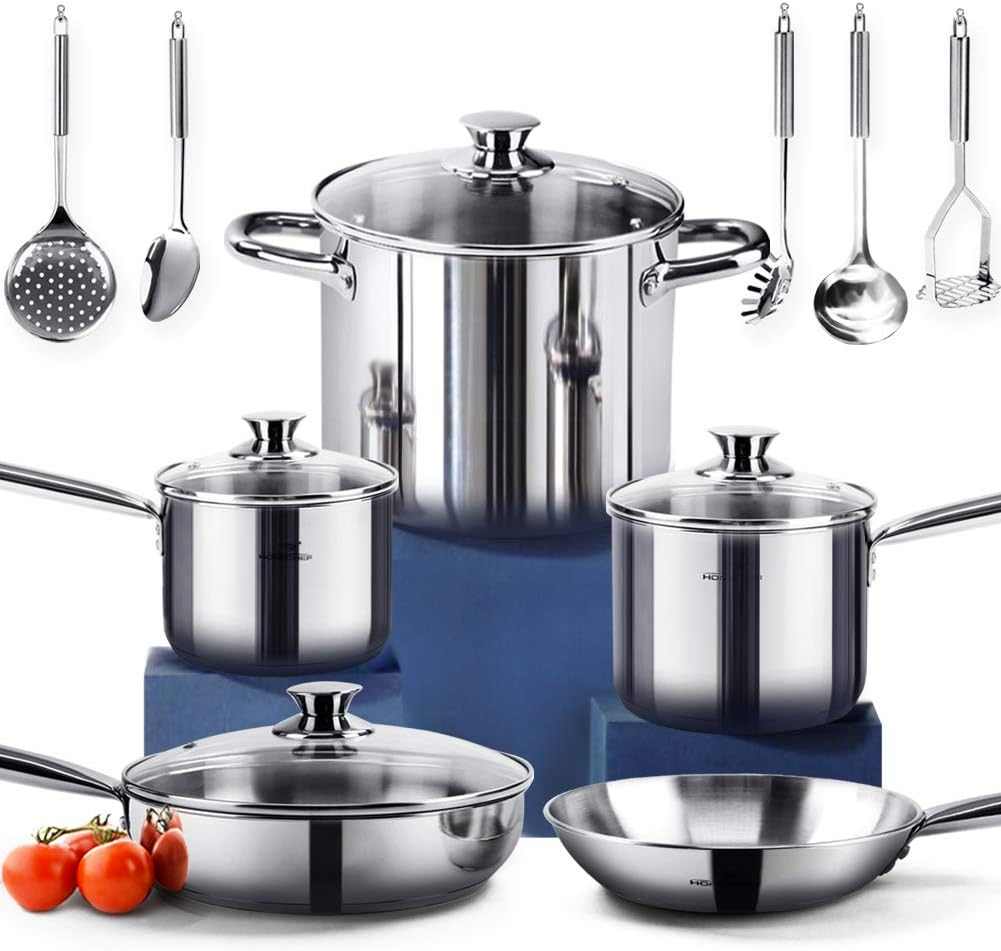
- Metal utensil safe
- Dishwasher safe
- Induction compatible
- 18/0 stainless steel exterior
Austenitic stainless steel is a diverse group that encompasses various subclasses. The commonly utilized types in cookware are referred to as 18/10 and 18/8. These particular types contain 18% chromium and either 10% or 8% nickel, respectively.
Additionally, cookware labeled as 18/8 or 18/10 may also be classified as grade 304.
These grades are typically employed on the cooking surface of the pan to provide exceptional resistance against corrosion.
In addition to the stainless steel grade, it is important to consider the core material. Most budget-friendly stainless steel pans feature aluminum cores instead of copper, and the thickness of the aluminum layer can significantly impact the weight and performance of the pan.
2. Heat Tolerance
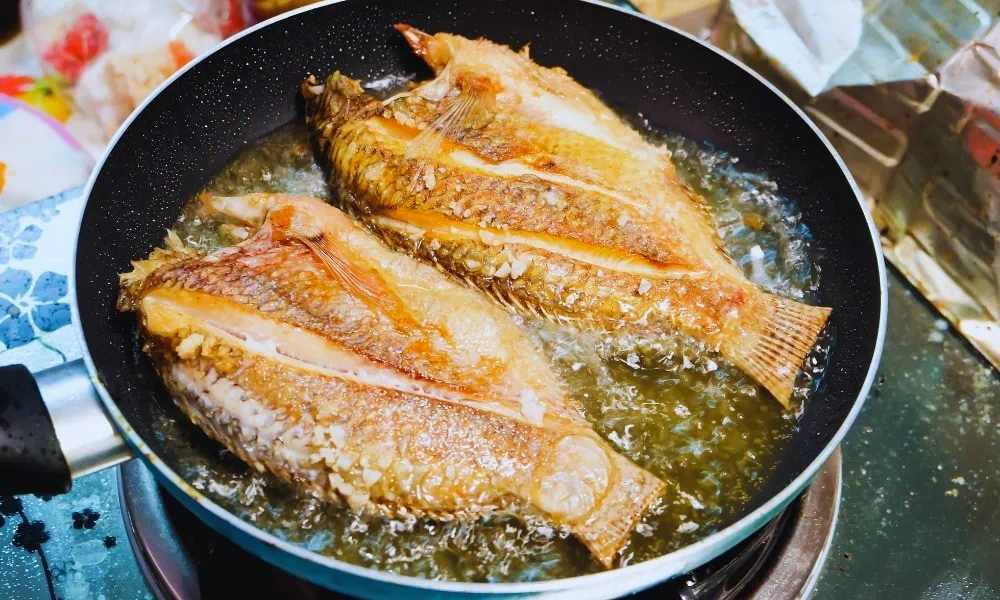
Stainless steel and hard anodized aluminum are both excellent materials with high heat tolerance. Hard anodized aluminum can withstand temperatures as high as 3,632°F, although it's unlikely that you'll ever need to cook anything at such extreme temperatures.
However, the issue with hard anodized aluminum cookware lies in its nonstick coating. When heated above 500°F, PTFE coatings can release harmful fumes, making it unsuitable for broiling. On the other hand, stainless steel grade 304 has a theoretical heat tolerance of up to 1,697°F, even in cookware form.
However, for safety reasons, manufacturers typically recommend an upper-temperature limit. For instance, All-Clad's 5-ply stainless steel cookware is designed to withstand temperatures of up to 600°F.
3. Heat Transfer
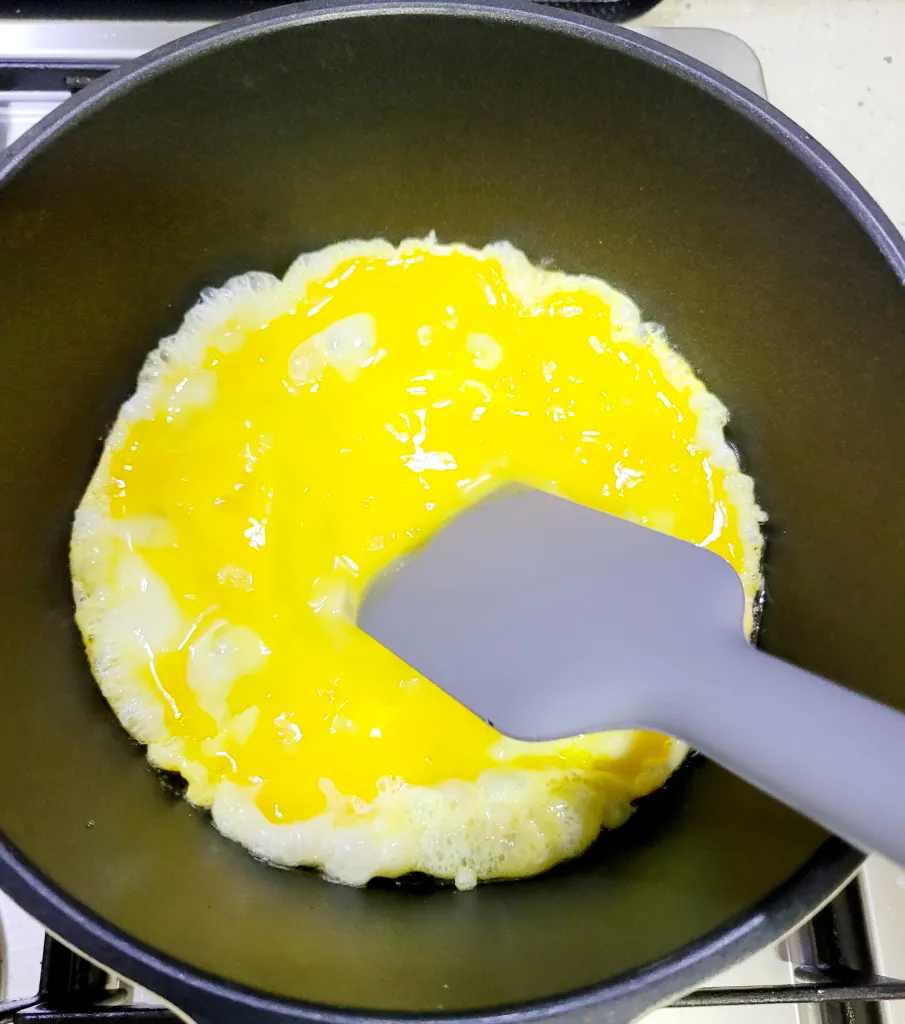
Stainless steel possesses excellent heat retention properties, although its capacity to heat rapidly and adapt to temperature fluctuations relies on the thickness of its aluminum or copper core. Moreover, stainless steel ensures uniform heat distribution, thereby eliminating the occurrence of hot spots on superior-quality pans once they are fully heated.
On the other hand, aluminum exhibits high conductivity. However, it is worth noting that the anodization process diminishes heat transfer, resulting in reduced heat absorption for hard anodized aluminum compared to regular aluminum. Consequently, when utilizing hard anodized aluminum, it is possible to encounter a greater number of hot spots on your pan.
4. Nonstick Ability
Anodizing brings about molecular changes in the metal, resulting in a layer of oxidation with smaller pores that reduce food sticking. Vintage hard anodized aluminum without a coating is relatively nonstick. However, all modern hard anodized cookware, initially, offers a high level of nonstick performance due to its PTFE or ceramic coating layers.

In contrast, stainless steel lacks nonstick properties, which is considered one of its major disadvantages. With proper handling, stainless steel can be made virtually stick-free. Nevertheless, nonstick hard anodized cookware possesses this characteristic right from the start.
5. Ease of Use
Hard anodized aluminum is incredibly user-friendly due to its nonstick coating. It is important to exercise caution and avoid overheating it, as excessive heat can cause degradation of the Teflon and ceramic components.
On the other hand, stainless steel requires a bit of a learning curve. Achieving a nonstick surface with stainless steel requires practice and familiarity with determining the right time to add food.
6. Cooktop Versatility
Stainless steel offers greater versatility compared to hard anodized aluminum. It can be used on various cooktops, including ovens and broilers. Additionally, if your cookware has ferritic stainless steel on the exterior, it is also compatible with induction cooking.
On the other hand, hard anodized aluminum lacks versatility as it is not induction-compatible due to its lack of magnetic properties. However, certain brands, such as All-Clad, address this limitation by incorporating a stainless steel disc at the bottom of their hard anodized cookware, enabling induction compatibility.
All-Clad HA1 Hard Anodized Nonstick Cookware Set
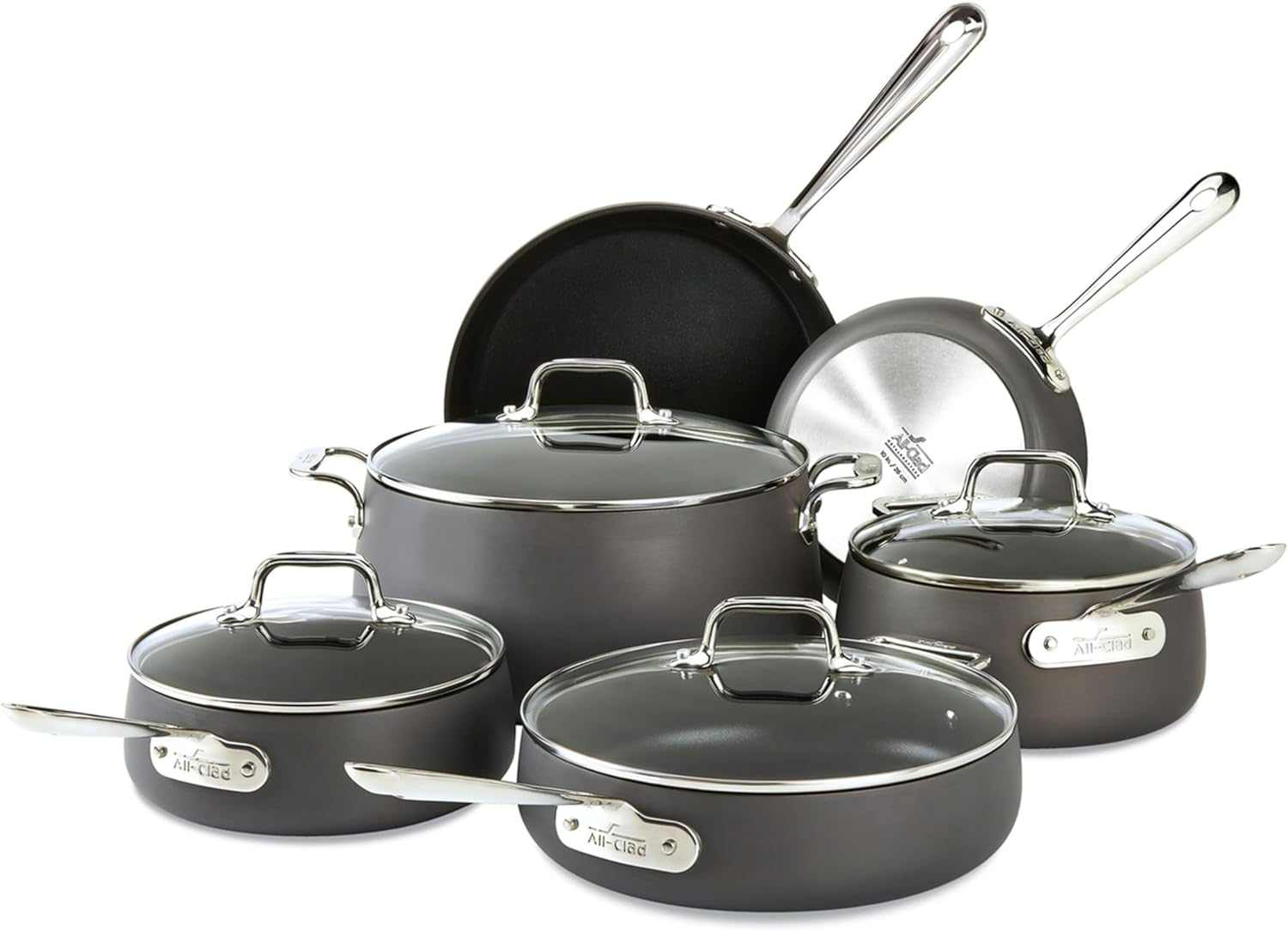
- Heavy gauge aluminum
- Double riveted stainless steel handles
- Tempered glass lids
- Oven safe up to 500°F
7. Applications
Stainless steel cookware stands out among the various types available due to its ability to cook a wide range of foods. Whether you need to boil water, prepare a hearty soup, or bake a delicious dish, stainless steel is the go-to option. Moreover, with proper preheating, you can achieve the perfect flakiness and stickiness when frying proteins like fish and eggs. However, it's important to note that stainless steel cookware is not suitable for cooking low-fat food.
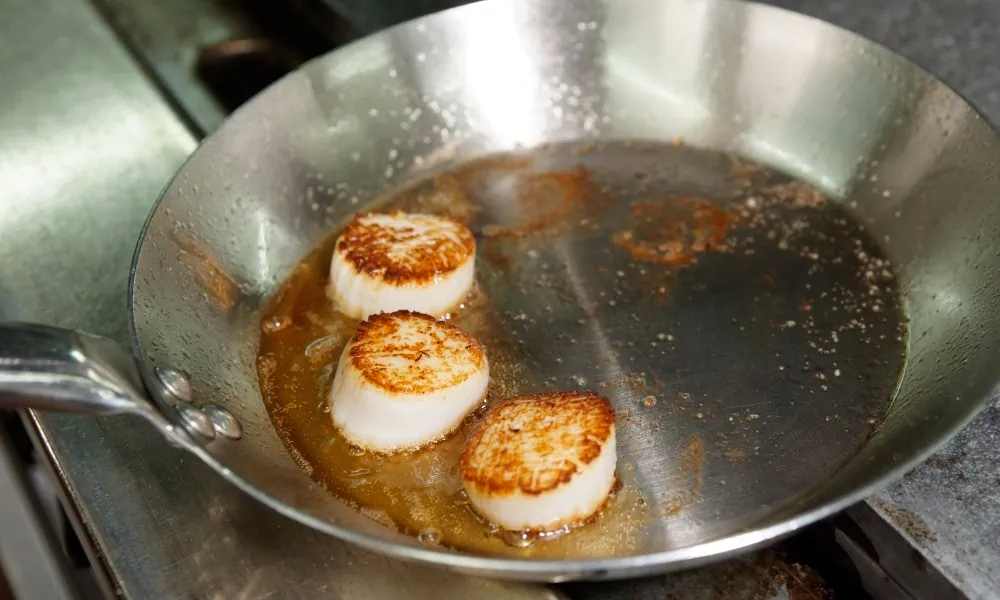
On the other hand, nonstick-coated hard anodized cookware is ideal for cooking with minimal oil. However, its versatility is somewhat limited. It is not recommended for searing meat or other high-heat cooking methods. Unlike stainless steel or cast iron, the nonstick surface fails to create the desired browning effect.
8. Cleaning, Care, and Maintenance
If you have hard anodized aluminum cookware with a nonstick coating, cleaning it is a breeze. Simply use a mild dish soap and a soft sponge to wash the nonstick surface. However, it does require some maintenance to prolong the life of the nonstick coating, such as being mindful of the temperature and using non-metal utensils, whether it's ceramic or Teflon.
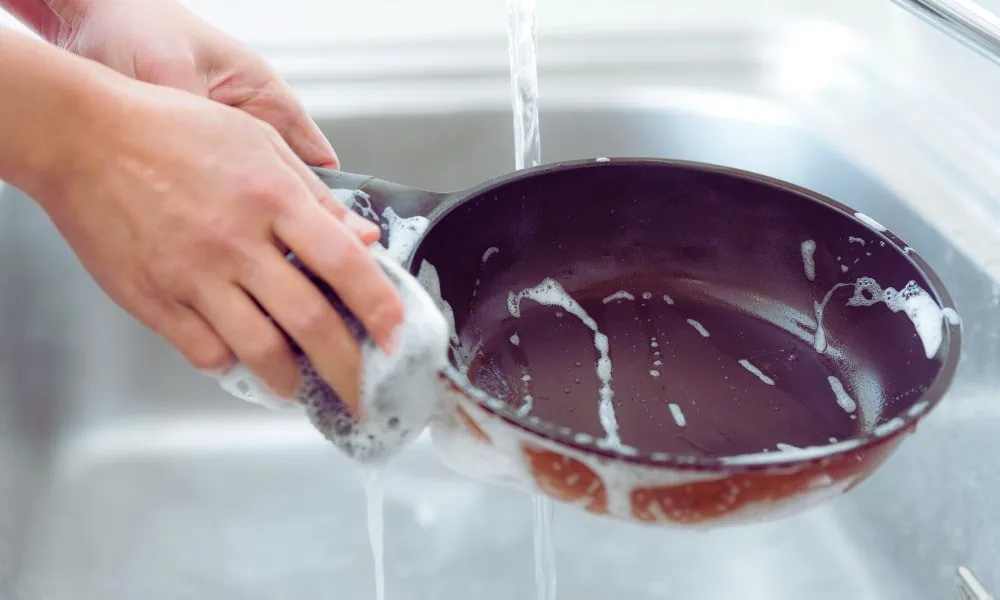
On the other hand, stainless steel can be a bit more challenging to clean, but with proper preheating, it can become nonstick. You don't need harsh detergents or scrubbers to clean your stainless steel cookware. It may develop a rainbow tint, but you can easily clean it with home remedies.
Keep in mind that hard anodized aluminum cookware is not dishwasher-safe and should only be handwashed. However, most stainless steel cookware is safe to be washed in the dishwasher.
9. Longevity and Durability
Stainless steel is renowned for its long-lasting durability. It is an iron alloy infused with additional metals, which enhances its resistance to warping, corrosion, and wear. By properly maintaining your stainless steel cookware, you can enjoy a lifetime of use from it.
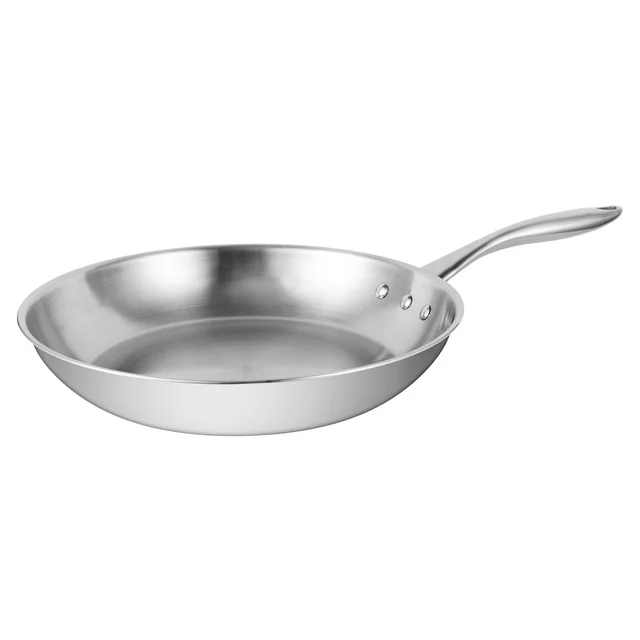
On the other hand, hard anodized aluminum is also highly durable, thanks to its oxidized coating. However, the nonstick coating on such cookware has a relatively short lifespan. Teflon and ceramic coatings tend to lose their nonstick properties after a few years, necessitating replacement every two or three years. This is why most ceramic-coated cookware typically comes with a guarantee of no more than two years.
10. Health, Safety, and Environmental Concerns
Many home and professional chefs have opted to replace their nonstick pots and pans with stainless steel due to health concerns. Stainless steel is highly regarded for its health benefits, as it is nonstick and does not contain PTFE.

When it comes to aluminum cookware, hard anodized aluminum is considered much safer than regular aluminum. It is less reactive and does not release aluminum into your food if it comes into contact with it. However, the polymer coating found on modern hard anodized cookware has made it undesirable for many individuals.
11. Style and Aesthetics
Stainless steel possesses a smooth and lustrous look, which makes it an excellent choice for enhancing the overall aesthetics of any kitchen. Certain pans feature brushed exteriors, while others boast a polished finish.
On the other hand, hard anodized aluminum cookware also offers an appealing visual appeal. Their Teflon and ceramic cooking surfaces contribute to a pristine appearance, complemented by often painted exteriors.
12. Price
Stainless steel cookware is typically pricier compared to hard anodized cookware. Take, for instance, a 10-piece stainless steel set such as the Made In set, which costs almost three times as much as a 10-piece hard-anodized nonstick set like the KitchenAid set.
However, it's important to note that prices can differ even within the same brand. As an illustration, the KitchenAid 12" ceramic-coated pan is more expensive than their stainless steel pan of the same size.
KitchenAid Hard Anodized Induction Nonstick
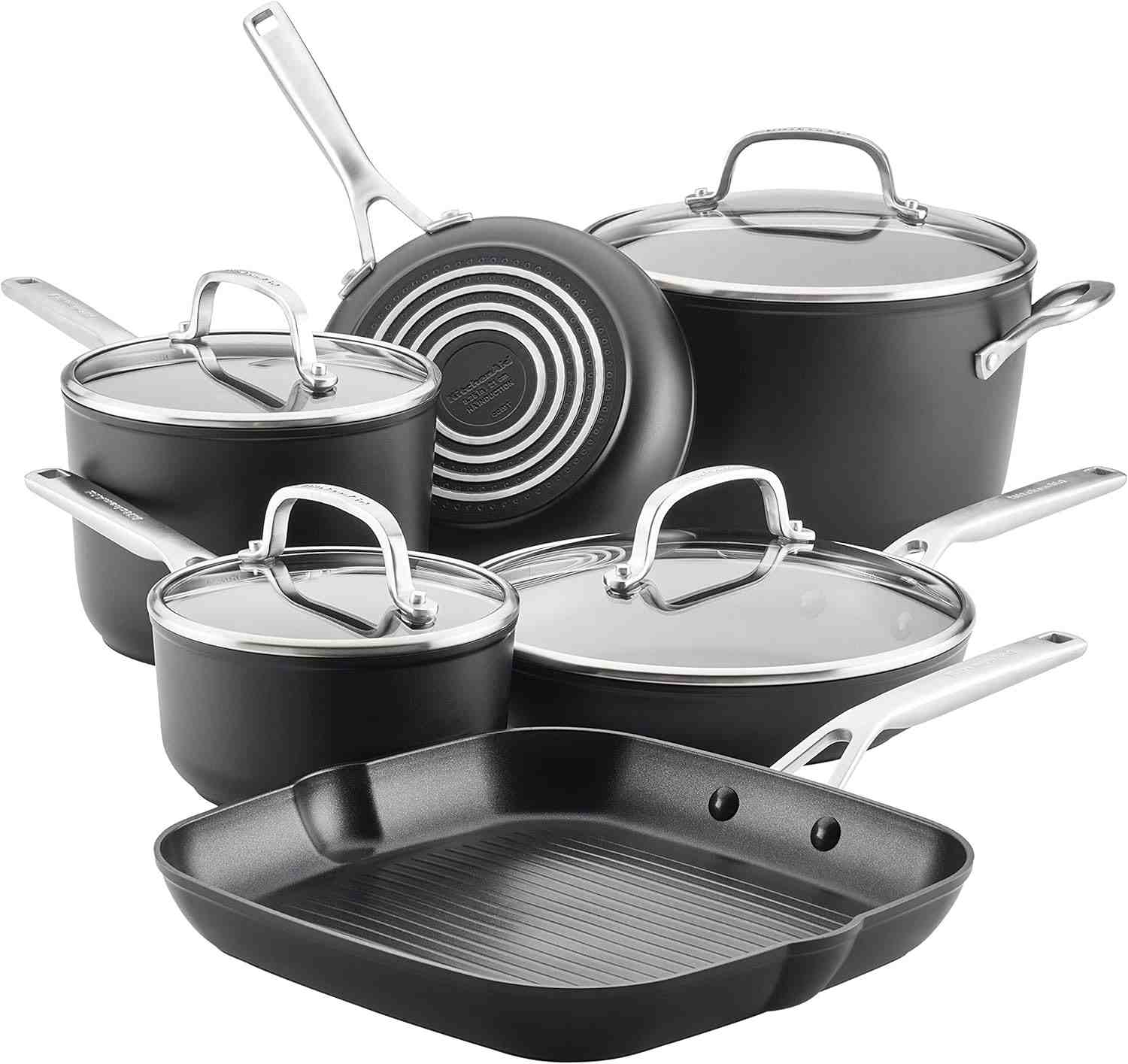
- Heat evenly
- All cooktops compatible
- Triple layer nonstick
- Oven safe to 500°F
This demonstrates the extensive variety of prices offered for both campsites, however, a general analysis reveals that stainless steel is pricier. Generally speaking, hard anodized aluminum is more costly than regular aluminum.
The Better Option: Stainless Steel vs Hard Anodized Cookware
When it comes to choosing between hard anodized aluminum and stainless steel, the decision ultimately boils down to personal preferences and budget constraints. However, I personally tend to favor stainless steel.
Despite being more expensive, stainless steel offers several advantages that make it a worthwhile investment. Not only does it boast superior longevity, but it also ensures a higher level of safety. Stainless steel cookware is versatile and can be used for any cooking style, making it a versatile option for all your culinary needs. With proper care and maintenance, stainless steel cookware can last a lifetime, making it a wise long-term investment.
That being said, it may be beneficial to have a combination of both types of cookware. By keeping one or two hard anodized pans, you can enjoy the benefits of their nonstick properties while still reaping the advantages of stainless steel in the rest of your cookware collection.
Conclusion
In my opinion, stainless steel and hard anodized aluminum are both excellent options for home and commercial kitchens. However, stainless steel stands out to me due to its numerous appealing advantages. Not only is it safe to use, but it also boasts enhanced durability and versatility. On the other hand, the nonstick coating on hard anodized cookware is a drawback as it tends to wear off after just a few years.